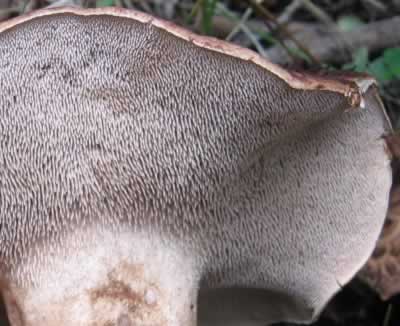Gills
The attatchment of gills to the stem is a major diagnostic feature that is often a first step in the identification process. Gill attatchment is often a feature that is conserved across the entire genus.
Other important features of the gills are:
- Spacing
-
Color when immature vs. mature
- Thickness
- Brittleness
- Texture

Diagram: David Aurora , Mushrooms Demystified
Free gills
Free gills never touch the stem. Typically, if a species is said to have free gills, there will be a noticeable space between the stem and the gill attatchment.
This photo is of an Agaricus. You can see many examples of free gills the next time you visit the grocery store, as the Portabello, Crimini, and button mushrooms all belong to Agaricus.
Other common mushrooms with free gills include Amanita and Lepiota.
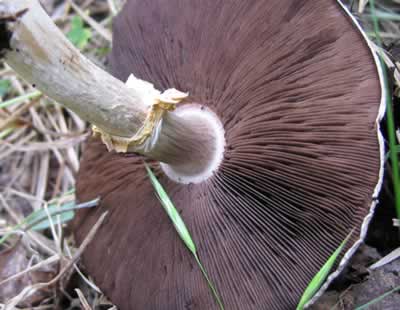
Adnexed gills (Narrowly attached)
Adnate gills can be hard to distinguish from free gills and notched gills; you may need to check multiple entries in your field guide just to be sure of your ID. These gills will attatch to the stem, but only by a small portion of the gill depth.
There are many species that have narrow gill attatchment. This photo is of the Blewit, Clitocybe Nuda.
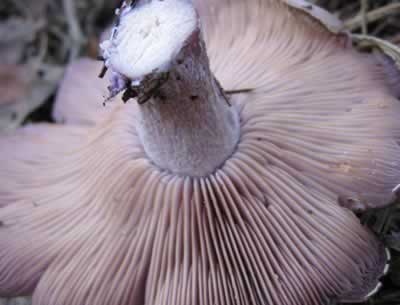
Notched gills
Notched gills are very similar to adnate gills, but diminish earlier and stay narrow for a small distance before attatching to the stem. This feature will form a ring of narrow gill attatchment around the stem that is quite distinctive.
Many members of the genus Tricholoma have notched gills. I haven't identified the mushroom in this photo but it is similar to other Tricholoma species.
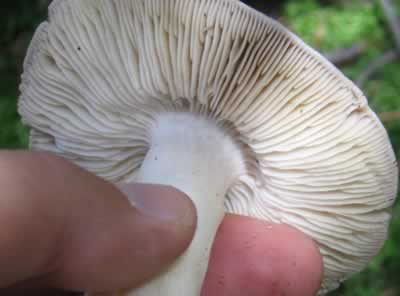
Adnate gills (Broadly attatched )
Often this type of gill attatchment is simply called: attatched. You could consider it the "default" gill attatchment, but there are plenty of mushrooms with different attatchments.
The basic feature of this gill attatchment is that it does not diminish as it approaches the stem, nor does it follow the stem toward its base as it attatches (which would make it decurrent).
This photo is of Megacollybia platyphylla, a large wood rotter.
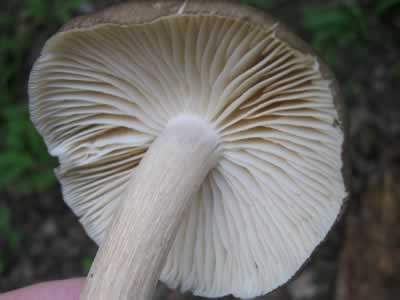
Pored mushrooms
Of course, not all mushrooms have gills! Members of the family Boletaceae all have pores (with one exception).
Important features of pores are:
- Size of individual pores
- Color of pore tissues
- How they attatch to the stem (Boletus often have a detatched pore layer)
- Color changes when bruised
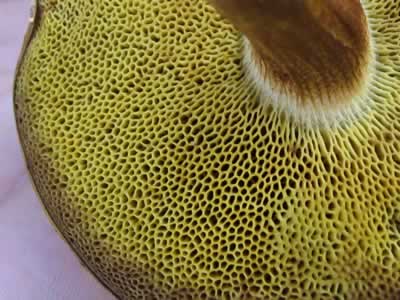
Toothed mushrooms
There aren't many toothed mushrooms, which makes them fairly easy to identify. When you discover your first toothed mushroom, I think you'll find it quite exciting!
Typically, toothed mushrooms are not identified by the differences of the teeth, but rather other features such as color and cap texture. There are even some which grow out of the side (or underside) of decaying wood and have no stems. Among the toothed fungi are the genera Sarcodon, Hericium, and Hydnum (Sweet tooth or Hedgehog).
